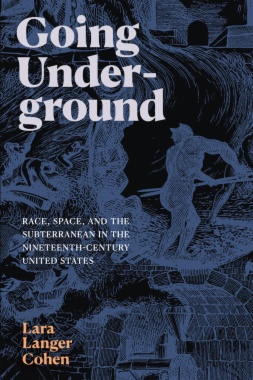First popularized by newspaper coverage of the Underground Railroad in the 1840s, the underground serves as a metaphor for subversive activity that remains central to our political vocabulary. In Going Underground, Lara Langer Cohen excavates the long history of this now familiar idea while seeking out versions of the underground that were left behind along the way. Outlining how the underground’s figurative sense first took shape through the associations of literal subterranean spaces with racialized Blackness, she examines a vibrant world of nineteenth-century US subterranean literature that includes Black radical manifestos, anarchist periodicals, sensationalist exposés of the urban underworld, manuals for sex magic, and the initiation rites of secret societies. Cohen finds that the undergrounds in this literature offer sites of political possibility that exceed the familiar framework of resistance, suggesting that nineteenth-century undergrounds can inspire new modes of world-making and world-breaking for a time when this world feels increasingly untenable.
- Cover
- Contents
- Acknowledgments
- Introduction: A Basement Shut Off and Forgotten during the Nineteenth Century
- 1. The “Blackness of Darkness” in Mammoth Cave
- 2. Early Black Radical Undergrounds
- 3. The Underground Railroad’s Undergrounds
- 4. The Depths of Astonishment: City Mysteries and Subterranean Unknowability
- 5. “To Drop beneath the Floors of the Outer World”: Paschal Beverly Randolph’s Occult Undergrounds
- 6. Subterranean Fire: Anarchist Visions of the Underground
- Epilogue: Staying Underground
- Notes
- Bibliography
- Index
- A
- B
- C
- D
- E
- F
- G
- H
- I
- J
- K
- L
- M
- N
- O
- P
- Q
- R
- S
- T
- U
- V
- W
- Y
- Z

